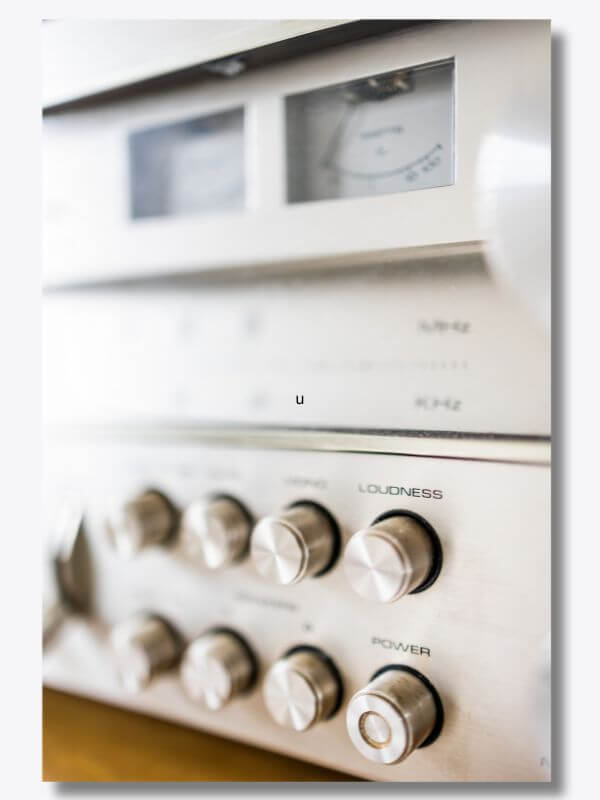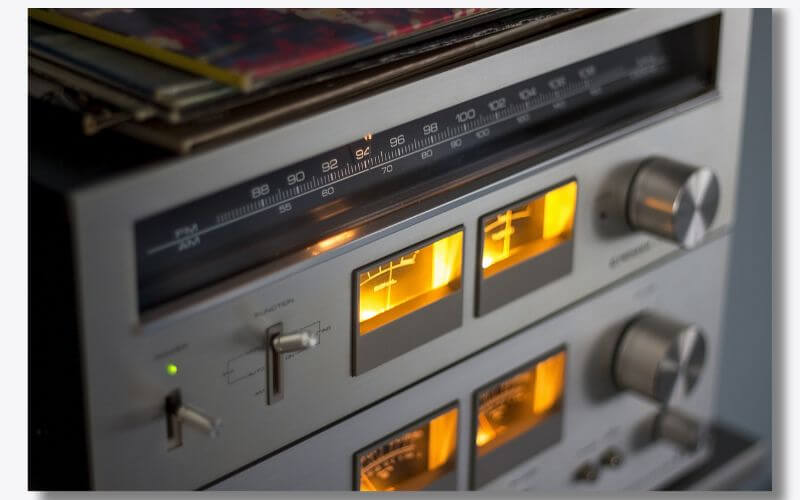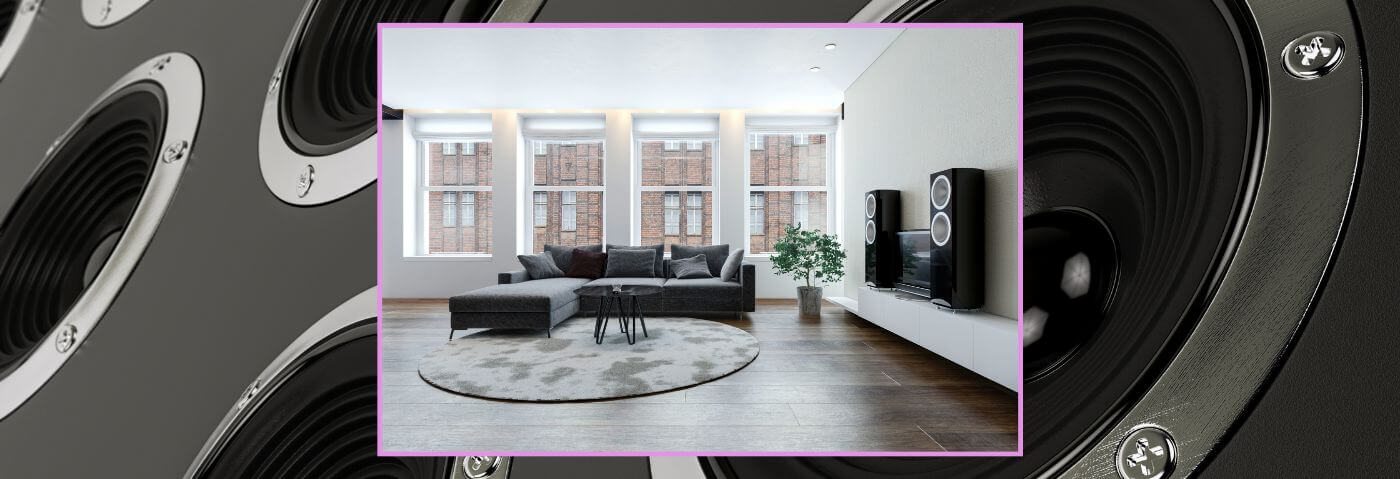With a wealth of options to choose from, we help you choose the best amplifier for your hi-fi speakers.

If we asked you to create a list of your favorite pieces of music, chances are a few collaborations would make it onto that list, correct? Even though some artists work best on their own, most join forces with a production team or another artist at some stage in their process.
The same concept applies to sound systems. They are at their best when all components work together. Think of it as a well-produced piece of music where everything is in balance and instruments or components complement each other. Read on to understand how to match speakers and amplifiers and optimize your sound system overall.
Understanding Amplifier Basics
Let’s start with the final component of a sound system – the speakers. Whether you’re watching a movie, playing a piece of music, or listening to an audiobook, your speakers produce the sounds you’re hearing. They do this by converting an electrical signal into sound waves. For this conversion to be efficient, speakers need amplifiers.
Have you ever wondered why speakers don’t work well without amplifiers? The reason is simple. Most audio signals are recorded at what is called line level. Put simply, their signal is too weak for the speaker to produce amazing sound.
Amplifiers are there to increase the power of the input signal received from the source and send a stronger version of that signal to your speakers. Amplifiers let you select the source of your sound and control the volume. Basic stereo amplifier models may only handle two channels – a left and a right – which create the output you hear. And while size and specifications vary widely, every speaker needs an amplifier of some kind.

Matching Amplifiers to Speakers
We started this article by talking about collaboration, so let’s take a closer look at that. Why is it so important to select an amplifier that matches your speakers well? It’s not only about getting the best possible sound quality but also about increasing the lifespan of your speakers and not damaging them.
In most cases, you’ll choose your speakers before selecting an amplifier, so it’s a case of matching the amp to the speakers rather than the other way around. There are three main factors to consider:
- Continuous power
- Impedance
- Number of channels
Start by looking at the continuous power rating of your speaker. This will give you an idea of the power rating you need from your amp. As a rule of thumb, selecting an amplifier with a power rating that delivers an output of 1.5 to 2 times the power of your speakers works well. You’ll get enough power to produce high-quality sound without overpowering the speakers’ capacity.
Aside from the speakers’ power rating, you also need to consider their impedance. Impedance refers to the level of resistance which the speakers present to the current coming from your amplifier. The higher a speaker’s impedance rating is, the weaker the signal it receives from the amplifier.
Next, you need to decide how many channels your amplifier needs to have. Every speaker that receives a different signal needs its own amplifier. For example, if you have a stereo system with a left and a right speaker, you need two channels. A more complex setup with five speakers and one subwoofer would need six amp channels. In this case, you’ll also most likely need to select an excellent AV receiver to control your system.

Considering Audio Source and Setup
Once you’ve matched your speakers’ and amplifier’s power rating, checked impedance, and confirmed the number of channels you need, it’s time to look at your overall setup in more detail.
Traditional sound systems tended to use a separate pre-amplifier and power amplifier. Integrated amplifiers combine the functionality of both. The pre-amplifier automatically selects the sound source and boosts the signal to a level that is sufficient for the power amplifier to take over. The power amp then further boosts the signal to allow your speakers to create an acceptable sound.
Depending on your budget and how you’re planning to use your sound system, separate or integrated components may work better for you. Integrated options are often a little more budget-friendly without needing to compromise on sound quality within the right environment. In either case, if you haven’t been following amplifier technology for some time, you’ll find that these gadgets have changed quite a bit over the past. They’re no longer just a black box in the corner of your living room.
Additional Features to Look for in Your New Amp
Modern amplifiers can do more than simply power sound. These models have developed into rather sophisticated pieces of equipment. So, what other features should you consider?
1. Connectivity Options
Gone are the days when standard auxiliary connections were all you could get for your amplifier. Today’s ‘black boxes’ offer improved versatility, including USB ports and Bluetooth technology. Choosing an amplifier with more than one option allows you to quickly switch between input sources like turntables, computers, and even your smartphone. It’s a great way to always enjoy the best possible sound.
2. Sound Quality
Just a few years ago, amplifiers simply strengthened the input signals they received. Today’s models deliver more than outstanding power. They can also reproduce audio signals in richer quality and with a fuller tonal range. If you’re a true audiophile, it’s worth taking the time to compare several models before making a final choice.
Making an Informed Decision
How can you choose the best amplifier for your speakers? Follow our suggestions above to narrow down your selection and find a good match in terms of channels, power, and impedance. But you can never have too much information before choosing a piece of sound equipment that will last you for years.
Next, take a look at reviews by other users and look beyond the final verdict. Checking out the opinions of users whose requirements match yours is an excellent way to go from shortlist to final choice and make a truly informed decision.





